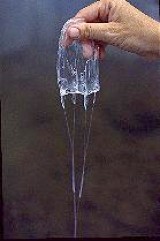First Aid for BOX JELLYFISH STINGS

Two concepts are key to treating box jellyfish stings. One is to prevent firing of any undischarged nematocysts remaining on the skin, thus preventing the injury from getting worse. The second is to treat the symptoms and pain caused by already-fired nematocysts. The following first aid treatment, based on current Australian research, is recommended for the stings of all species of box jellyfish:
- Immediately flood the area with household vinegar to keep undischarged nematocysts from firing. This does not relieve pain, but prevents additional stings.
- Never rub the area with sand or anything else.
- Irrigate exposed eyes with copious amounts of room temperature tap water for at least 15 minutes. If vision blurs, or the eyes continue to tear, hurt, swell, or are light sensitive after irrigating, see a doctor.
- Pluck off any vinegar-soaked tentacles with a stick or other tool.
- If the victim has shortness of breath, weakness, muscle cramps, palpitations or any other generalized symptoms, take them to an emergency room.
- For pain relief, apply ice packs. If pain becomes unbearable, go to an emergency room. No studies support applying heat to box jellyfish stings.
Contradictory studies exist on the effectiveness of meat tenderizer, baking soda, papaya, or commercial sprays (containing aluminum sulfate and detergents) on nematocyst stings. These substances may cause further damage. Some kinds of meat tenderizer, for instance, can cause skin peeling. In one U.S. fatality from the box jellyfish, Chiropsalmus quadrumanus, rescuers placed meat tenderizer almost immediately on the affected arm. The child was soon comatose and later died.
Alcohol and human urine are common nematocyst remedies, but both can be harmful. An Australian study reports that both alcohol and urine caused massive discharge of box jellyfish nematocysts.
Most Hawaii box jellyfish stings disappear by themselves. Because of this, even harmful therapies can appear to work. A key concept in the first aid of any injury is: Do no harm. Therefore, avoid applying unproven, possibly harmful substances to stings.
Occasionally, nematocyst toxins cause lymph nodes near a sting site to swell. If a red streak develops between the two areas, or if either area becomes red, warm and tender, see a doctor immediately. (See Staph, Strep and General Wound Care for more about infection.)
Few box jellyfish stings in Hawaii cause life-threatening reactions, but this is always a possibility. Some people are extremely sensitive to the venom; a few have allergic reactions. Consider even the slightest breathing difficulty, or altered level of consciousness, a medical emergency. Call for help and use an automatic epinephrine injector if available.
